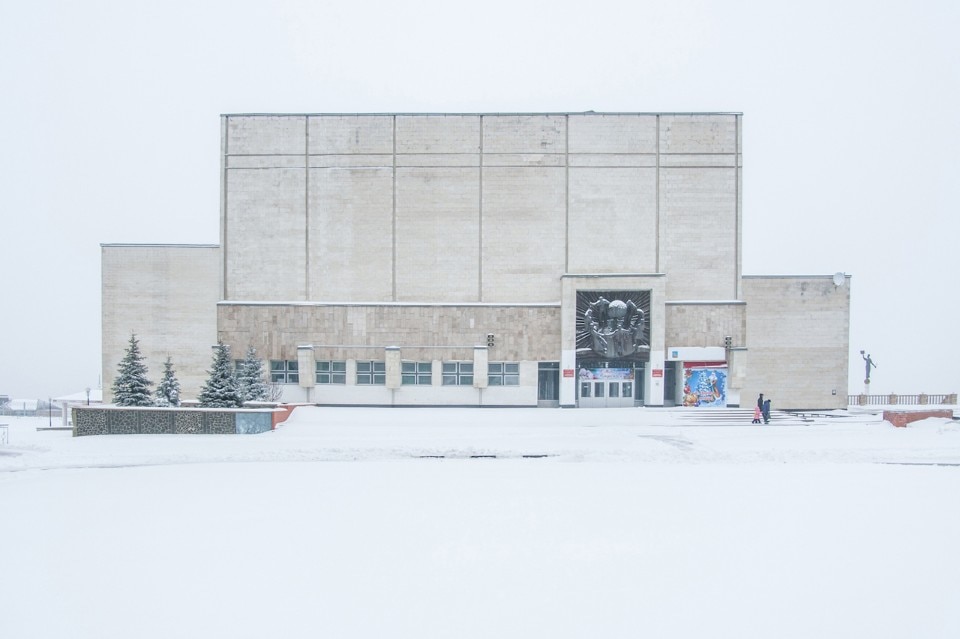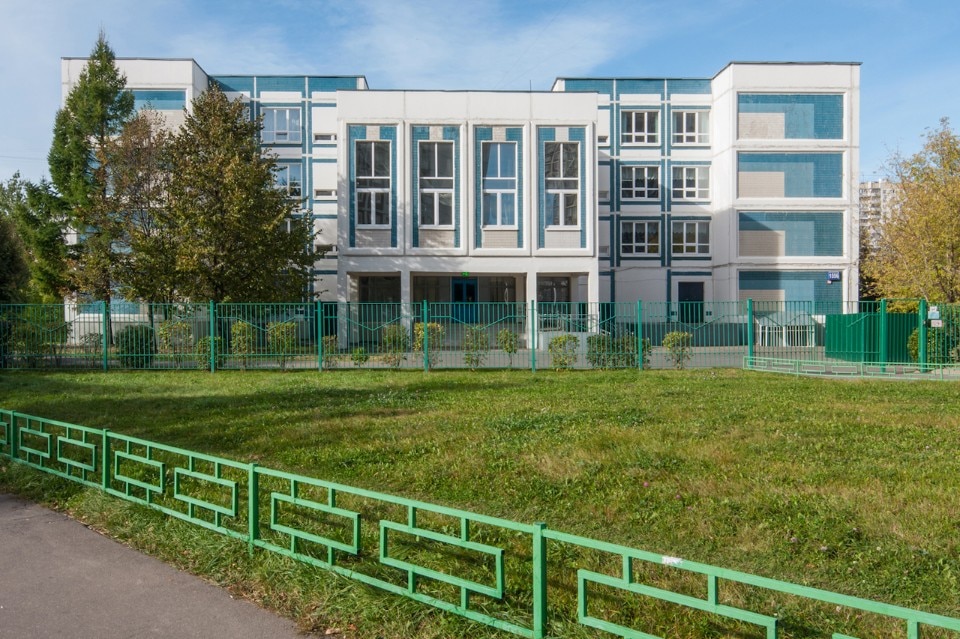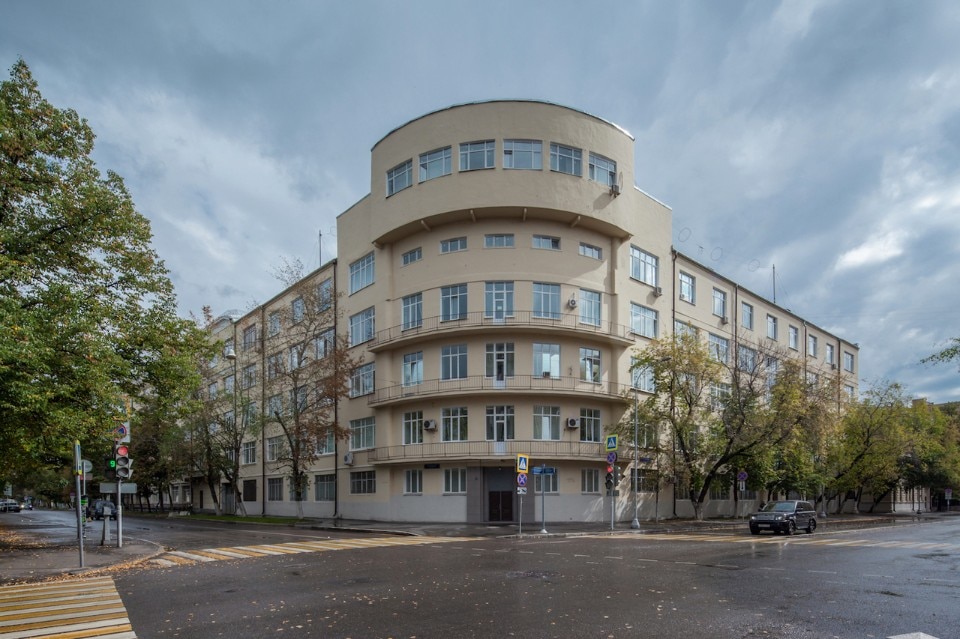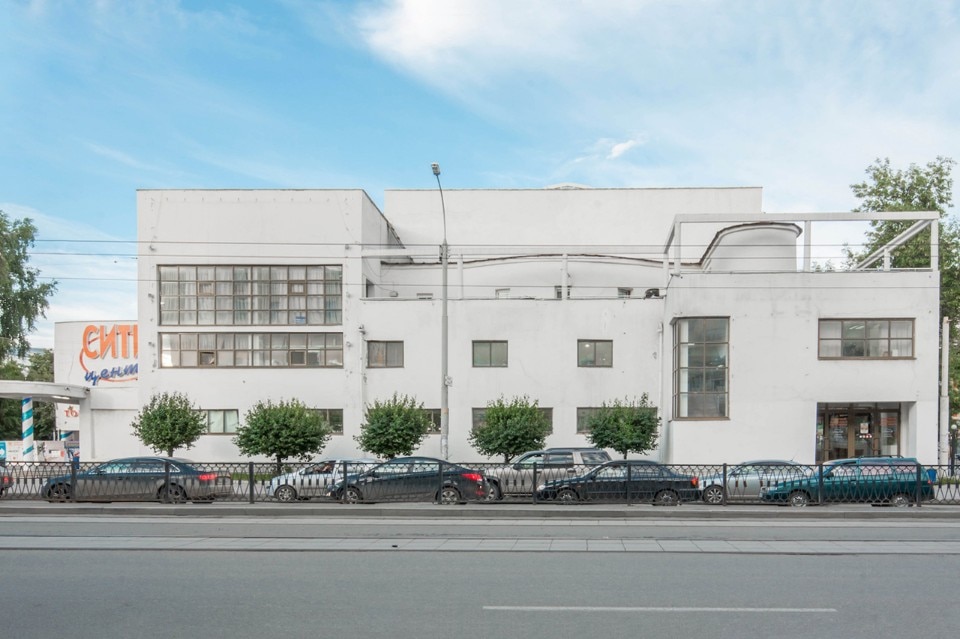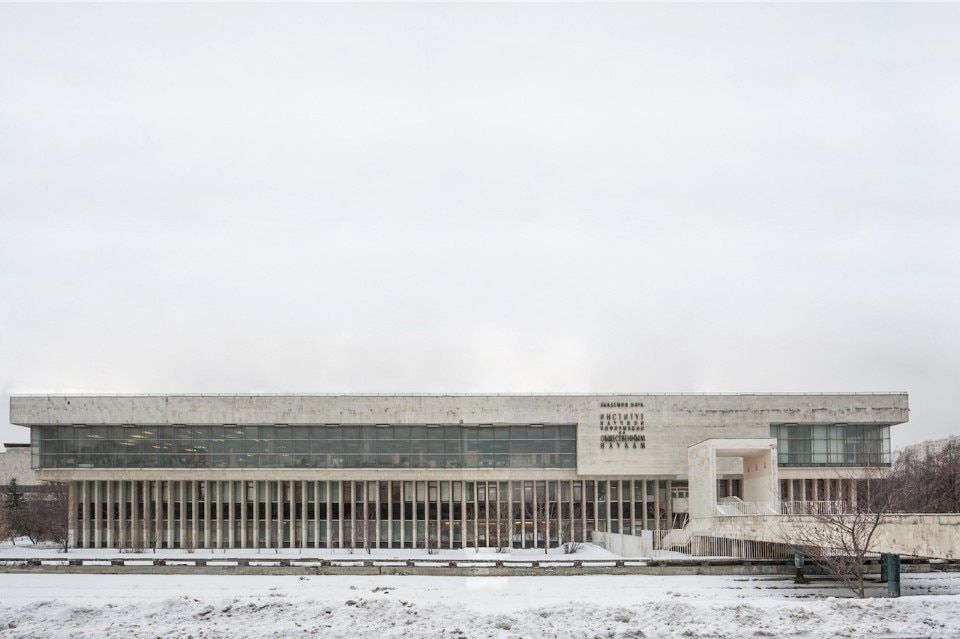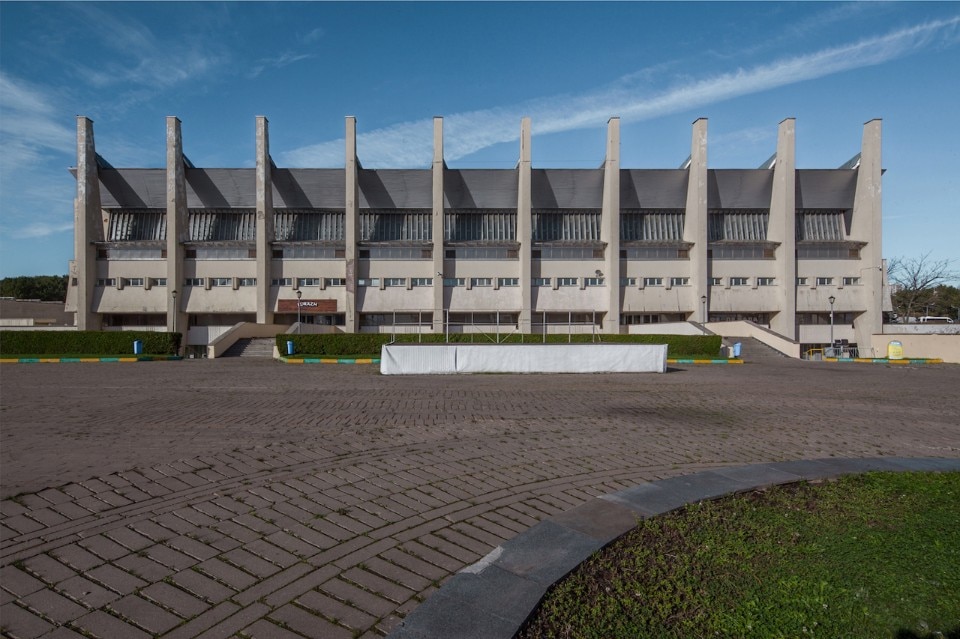Opening with surprisingly compact and original constructions the series continues with buildings that sprawl high and wide and gradually appropriate the entire photographic space.
While the gigantic edifices of the 1930s seem to exploit the legacy of Suprematist experiments with form, the white and grey cookie-cutter boxes from the 1970s gracefully and peacefully embody technique automation and a monumental decline in style – thus modernist grid turns into ornament.
The Brutalist imagery of the latter half of the 20th century glorified primitive forms, laconic solutions, and visible joints; its sincerity, minimalism, and straightforward thinking accentuated by expressive and somewhat romantic mosaic and sculptural plasticity furthered the development of architectural abstraction.
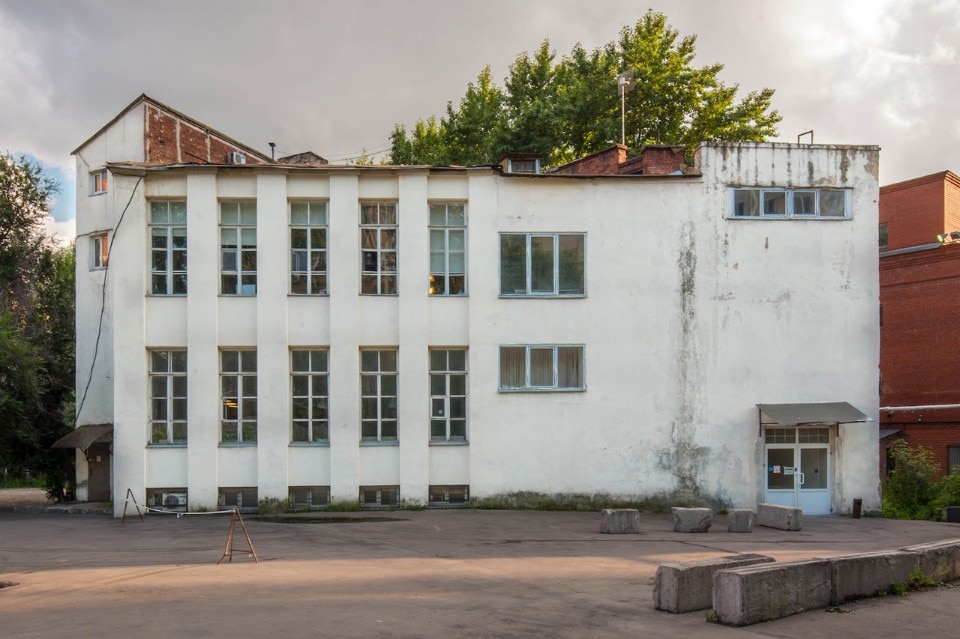
Today, in the age of concrete monoliths and 3D construction, the functionalist pathos of avant-garde, the monumental ambitions of the Stalin era, and the mass production of affordable square meters during the Khrushchev-Brezhnev period appear as quixotic experiments with bricks, blocks, frameworks, panels, and glass.
The neoclassical White House in Washington and the box-like modernist White House in Moscow designed by former neoclassical architect Dmitry Chechulin are absent among the project’s images signifying a “white” blind spot. The audience is offered a selection of non-governmental “white houses,” which includes department stores, printing companies, clubs, garages, cinemas, and circuses as well as residential and administrative buildings. It emphasizes their evolution within a single style simultaneously revealing the original architectural archetype – a plain white box. Ania Petrova
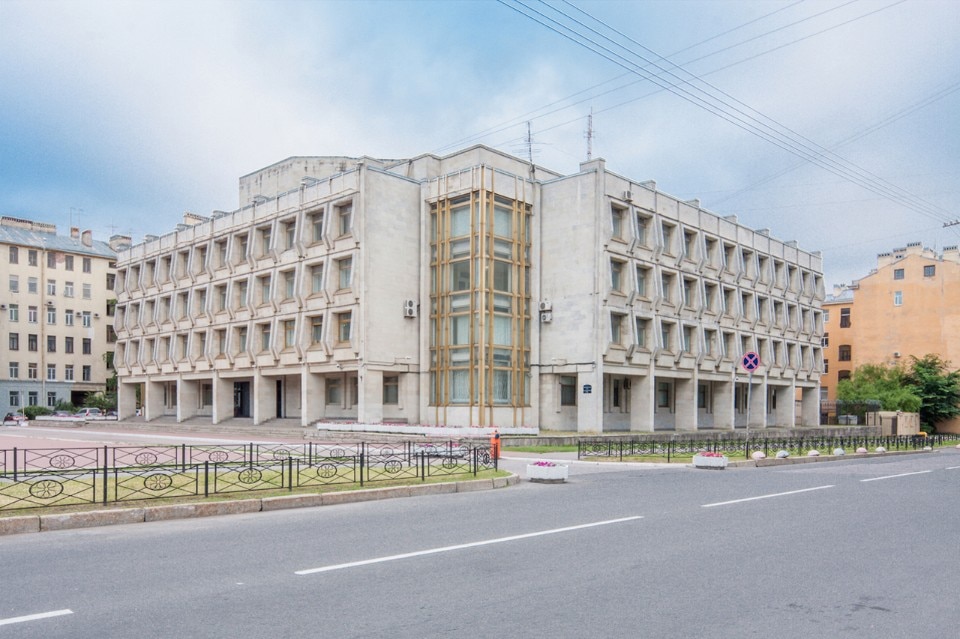
 View gallery
View gallery

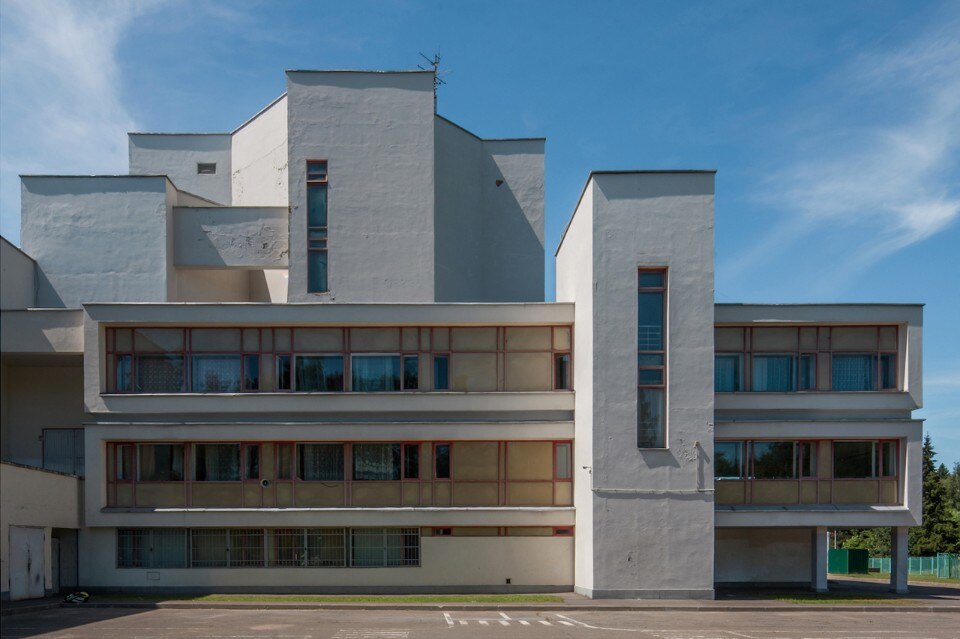
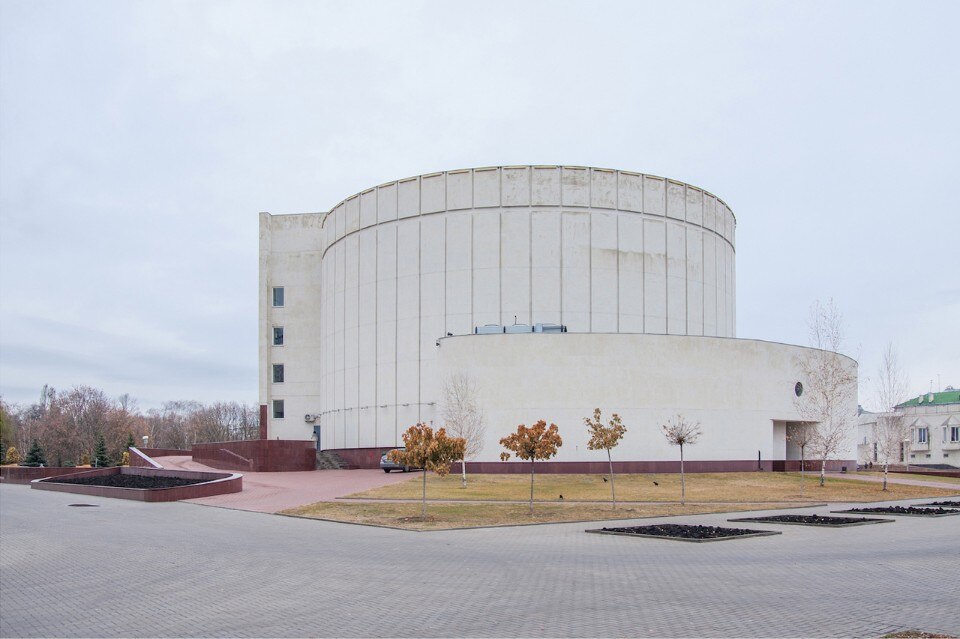
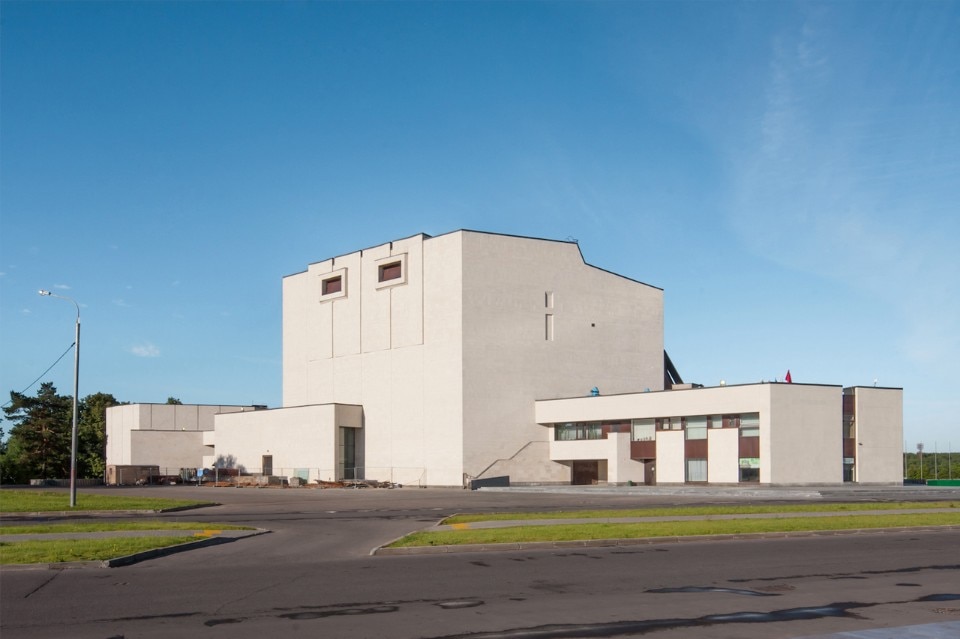
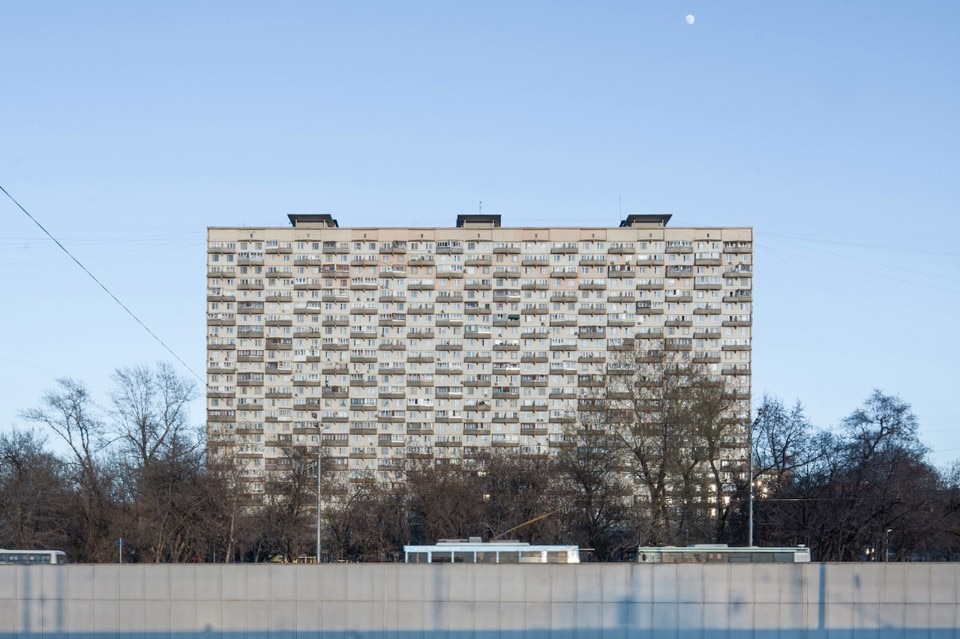
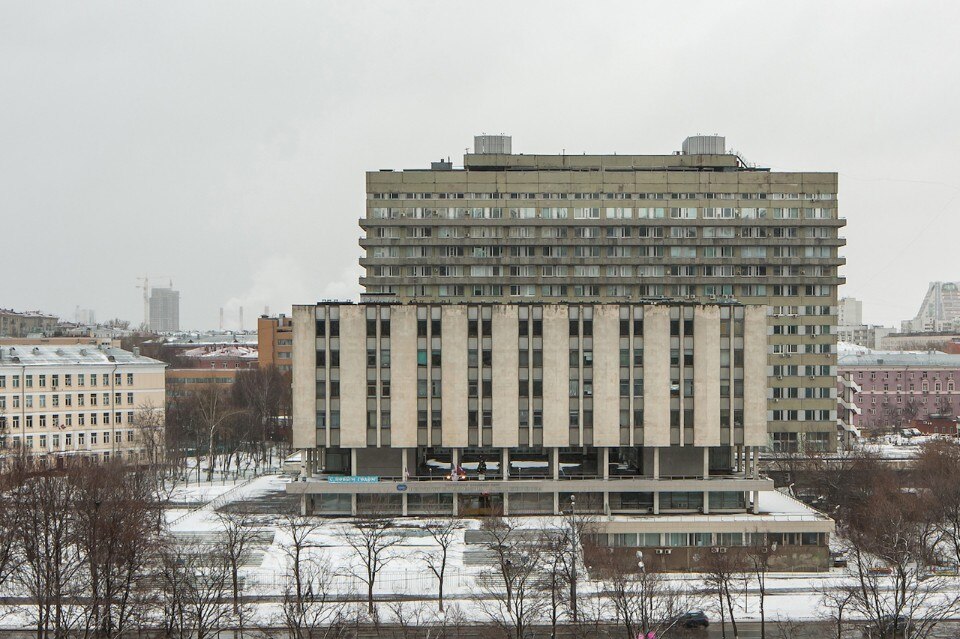
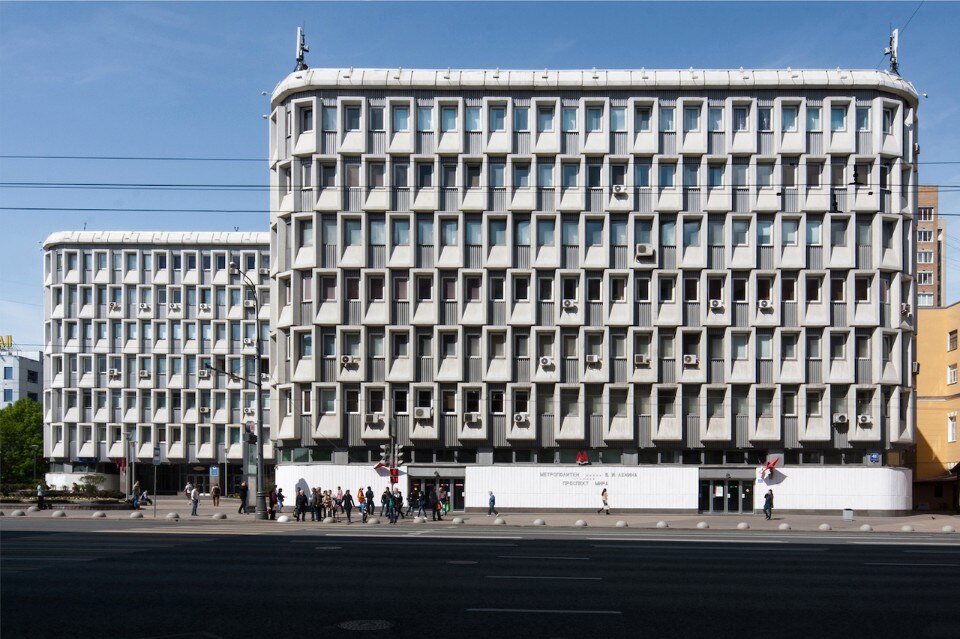
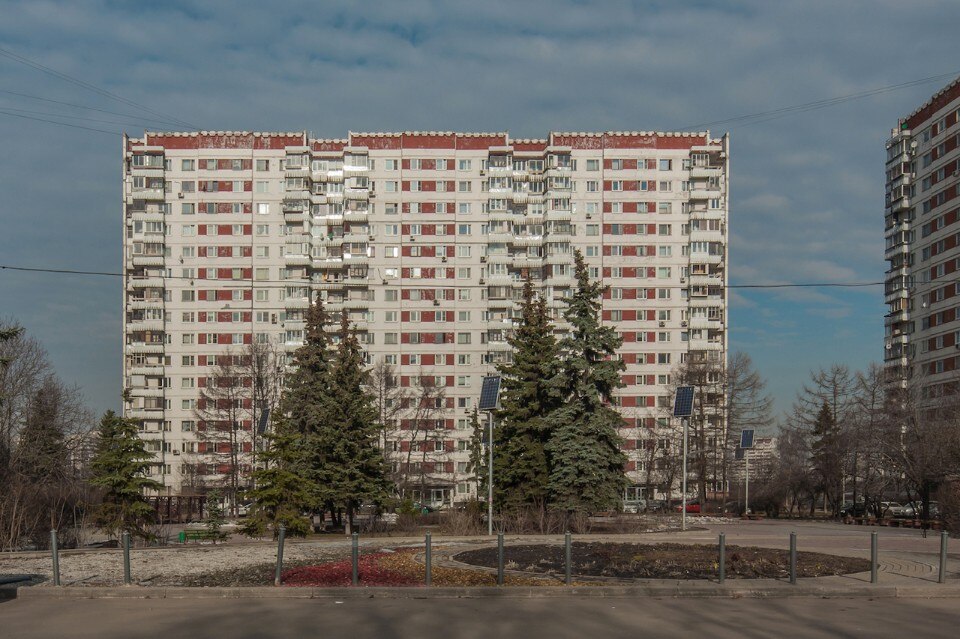
Denis Esakov was born in Karakol in Kyrgyzstan in 1984, and lives in Moscow. His works have been published in leading architectural publications such as The Architectural Review (UK), MARK (NL), Archdaily (US), The Modernist (UK), Designboom (IT), ORIS (CR), The Calvert Project (UK) and exhibited at the V Moscow International Biennale for Young Art, Moscow Museum of Modern Art, Shusev State Museum of Architecture, Moscow Manege, Gallery of Classical Photography.


